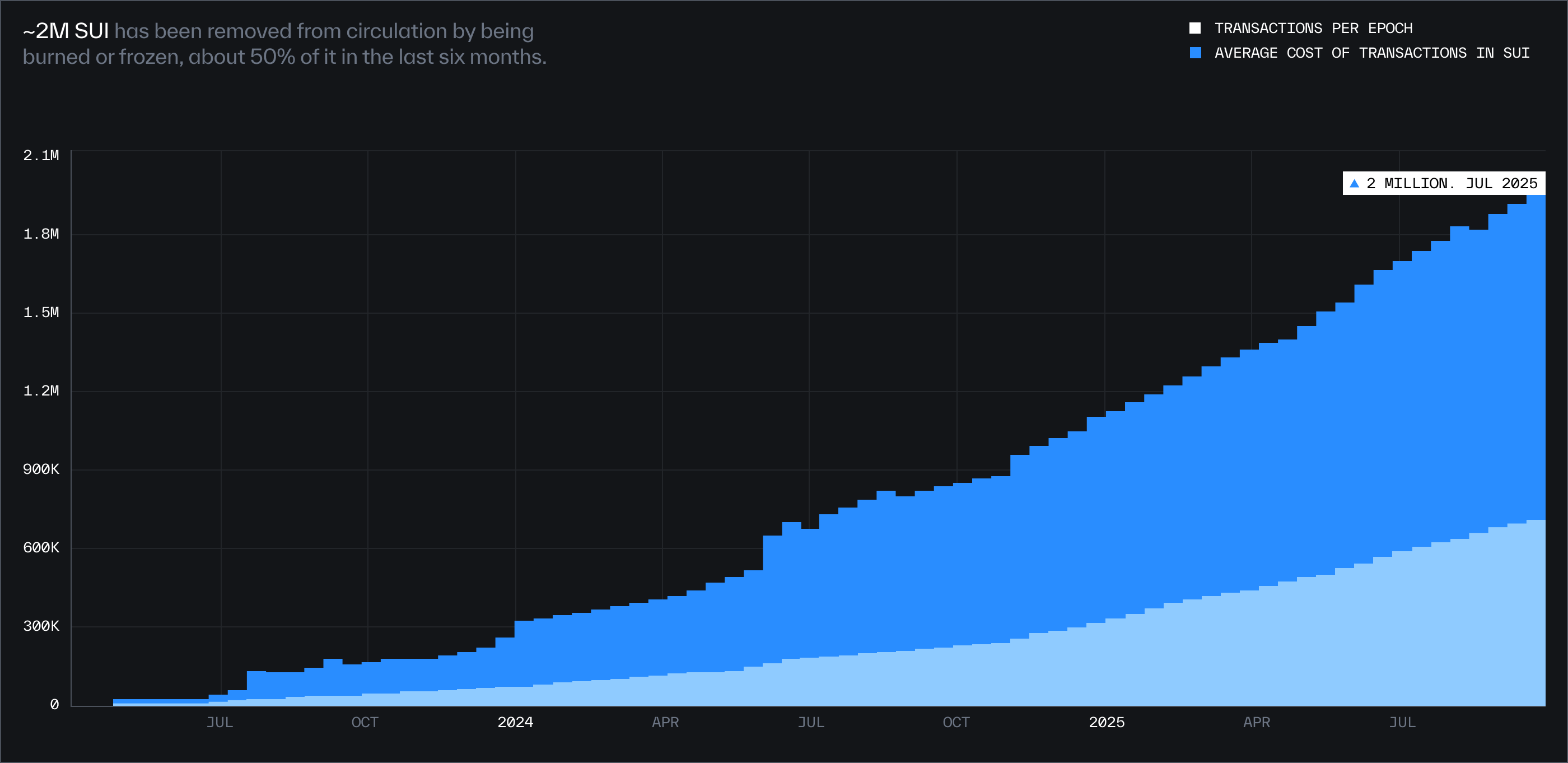Deflationary by design
With a fixed supply of 10 billion tokens and a storage fund that continually takes tokens out of circulation, adoption naturally reinforces scarcity. Every transaction on Sui burns tokens, so as the network grows, more tokens are removed from circulation - steadily increasing deflationary pressure.

SUI removed from circulation

A fixed supply means growth always translates into deflation
As Sui onboards more users and holders, the same fixed supply must support greater demand. Deflation is a feature, not a bug. More transactions make each token more valuable.
On top of a fixed supply, storage fees reinforce scarcity:
Non-refundable storage fees
Non-refundable storage fees are tokens permanently removed from circulation.
Storage deposits
Deposits for mutable objects remain in the storage fund for as long as the object exists. More objects means more storage fees, and more tokens effectively removed from circulation.
Deposits for immutable objects
Because immutable objects cannot be changed or deleted, their deposits are never returned, permanently removing those tokens from circulation.
Because SUI’s supply is capped at 10 billion tokens, these dynamics create steady downward pressure on available supply. As adoption grows and the storage fund expands, this pressure increases, reinforcing SUI’s long-term value.
